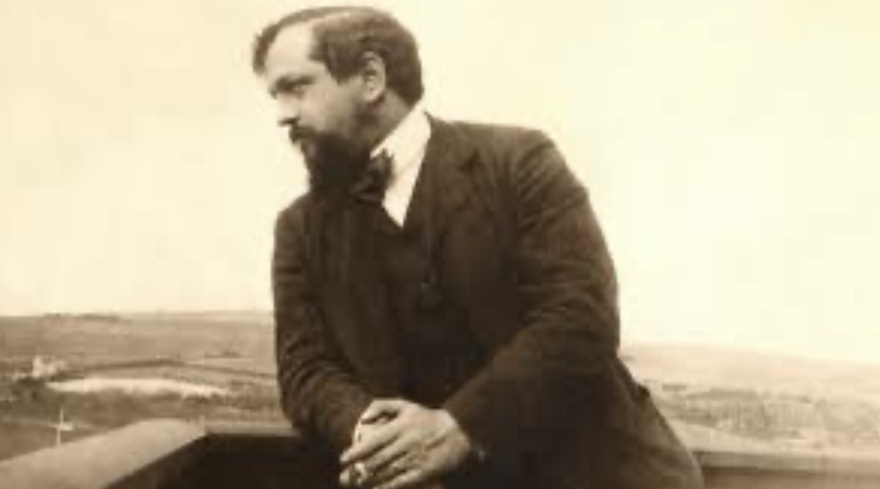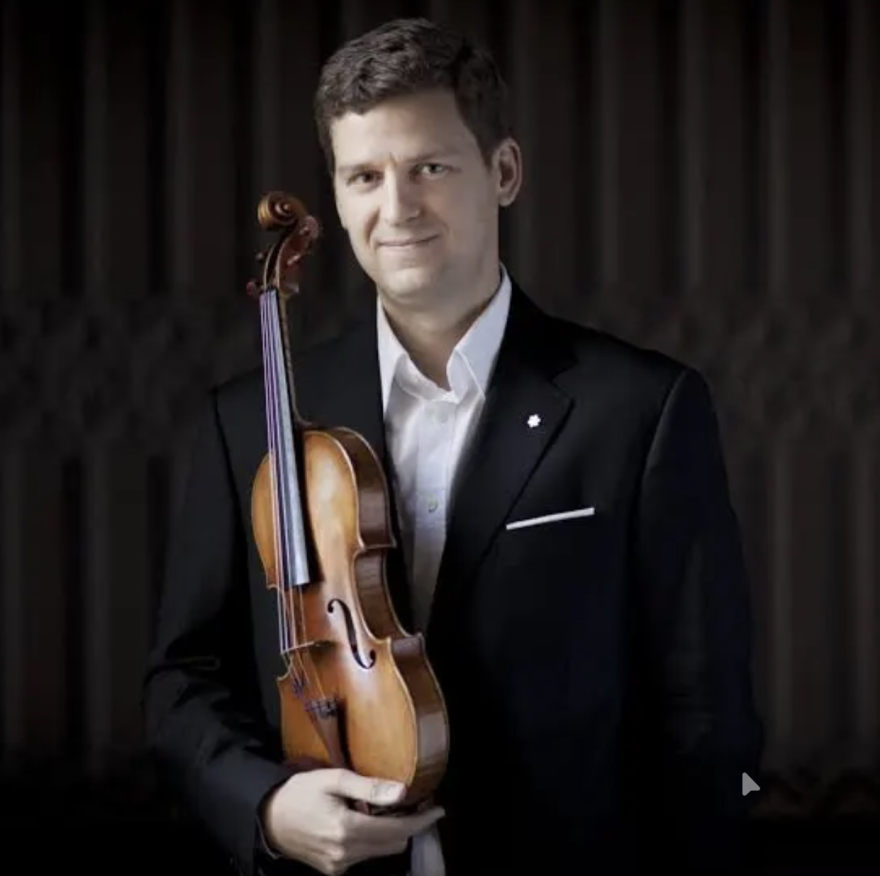The Fort Wayne Philharmonic Orchestra, conducted by Andrew Constantine, opened the Masterworks Series of the 2025-26 season this past Saturday with music by Claude Debussy, Bela Bartok, and Johannes Brahms. Constantine named the concert “From Elegance to Decadence.”
Conductor and composer Leonard Bernstein said Debussy’s “Prelude to the Afternoon of a Faun” was part of a “quiet revolution” in music. Composed in 1894, this symphonic poem was inspired by a poem by Stephane Mallarme that depicts the activities of a mythological figure that was half-human and half-goat. The music, for the most part, has magical and mysterious qualities that intrigue the listener and were actually as revolutionary as Igor Stravinsky’s 1912 score for the ballet “The Rite of Spring.”
An incredible flute solo, played in this performance by Luke Fitzpatrick, begins Debussy’s lyrical, poignant, and very moving work. Flutes, oboes, and clarinets dominate the music, as well as two harps. This is “dreamy” and “fanciful” music, which was given a brilliant performance by the Philharmonic. There were many magical and wonderful moments during the rendition of the groundbreaking score. It was one of the best performances of such memorable music, a relatively slow and steady piece that was given an intense but delicate treatment under Constantine’s leadership.

Constantine wisely played some key excerpts from the music before the actual performance. Bela Bartok composed the music for a one-act pantomime ballet about three poor men who kidnap and use a pretty girl to lure me to a room in the hopes of getting money from strangers. He summarized the tragic, dark, and decadent story, which involves some brilliant musical tone-painting by Bartok.
There is recurring dissonance and almost relenting violence and drama in the music, which is quite challenging for the musicians. The Philharmonic performance was unrelenting and very intense, with some brilliant playing by the musicians. This is an uncompromising work that was definitely part of the musical experimentation of the 1920s. Bartok seldom wrote such powerful and demanding music as in this score; he eventually turned to more melodic and more approachable works. It should be noted that Bartok’s fascination with folk music played a big part in his compositions, even in this troubling music and especially in his 1944 masterpiece “Concerto for Orchestra.”
The music begins with a very animated and troubling depiction of an unidentified “big city” much as Budapest, Prague, or Berlin in the 1920s. The tone painting is particularly impressive here and we were fortunate that the musicians played with great intensity and attention to details.
There was a true battery of percussionists and they had some important contributions to the score. Bartok placed great demands on the musicians and, in this case, everyone played an important part in the performance. There were a few occasional more lyrical moments, featuring some fine playing by the strings (including one short but impressive duet by Violetta Todorova and Johanna Bourkova-Morkova).
The appearance of the Mandarin in the music is especially powerful and mysterious, capturing the almost supernatural qualities of the strange figure. This music required particular virtuoso efforts by the Philharmonic musicians. It was a heroic effort by the players and it was challenging to hear since this is not easy music to appreciate. One does not “relax” when one hears a score that is more in keeping with the “expressionist” plays and movies of the 1920s. In some ways, this music points toward the violent, disturbing gangster films of the 1930s.
The audience responded enthusiastically to the performance, which was top notch and brilliant throughout.
In 1878, the German composer, pianist, and conductor Johannes Brahms composed his only violin concerto for his friend, Hungarian violinist and composer Joseph Joachim. Cast in the traditional three movements, Joachim himself was soloist in the premiere on January 1, 1879, in Leipzig, Germany. It was Joachim who said this masterpiece is one of the four great German violin concertos, the others by Beethoven, Mendelssohn, and Bruch (his first violin concerto).
The soloist in the Fort Wayne Philharmonic’s performance of the concerto was James Ehnes, a graduate of The Julliard School. He has performed with major orchestra in the United States, Canada, and Europe on a 1715 “ex-Marsick” Stradivarius violin. He moves most of his body as he plays.

The concerto begins with a majestic and dignified, extended orchestral introduction, common in many concertos of the time. Then the soloist enters and plays a variety of intense and lyrical passages. Ehnes was quite intense and energetic throughout the first movement, showcasing great ability, particularly in the more delicate moments. This is not all “storm and stress,” as some would say; there are very dramatic places as well as really lovely ones. It is a challenge to be able to play more than just the notes well; Ehnes played with great feeling. It includes the memorable cadenza or solo passage near the end of the movement, which was NOT written by Brahms but by Joachim (the violinist who premiered the work). Joachim’s solo is traditionally used; there are also other versions by a number of famous violinists. In any case, Ehnes displayed real ability in the solo.
The second movement is slower, of course, and it also begins with an orchestral introduction. Here the emphasis is on lyricism; the music is songlike and very moving. Once again, Ehnes and the Philharmonic were able to provide another aspect of Brahms’ music, the true romanticism that was a key part of his work. It was all beautifully played.
The third movement is joyous and happy. It is such delightful music and was another chance for Ehnes to really “shine” as a soloist. This ultimately leads to a virtual triumphant march by the musicians, which is one of the real musical treats in the score.
The audience responded with a thunderous standing ovation that went on for some time. Constantine and Ehnes consulted and they decided he would play an encore. Ehnes gave a short speech, in which he mentioned his “ties” to Indiana that now include serving as a professor at Indiana University in Bloomington. He then said he would play a ballade for solo violin from one of the unaccompanied works by the Belgian violinist and composer Eugene Ysaye. This was a dazzling performance that showed the true musical brilliance of a very gifted violinist. Ehnes is definitely one of the best active violinists today.
The next Philharmonic “Masterworks Series” concert is Saturday, November 8, at 7:30 p.m. in the PFW Music Center. The program will include Mozart’s Piano Concerto No. 21 in C Major, Kochel No. 467, with Ziata Chochieva, and Berlioz’s “Symphonie Fantastique,” Opus 14.


